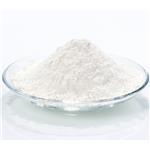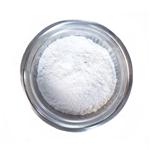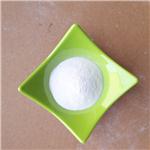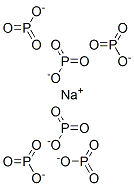Sodium polyphosphate: properties, production and safety
Sep 5,2023
General Description
Sodium polyphosphate is an inorganic polymer that exhibits phase separation in the presence of divalent cations. It can form coacervates or flocculates, which have applications in biomaterials, tissue engineering, drug delivery, and antibacterial agents. Calcium polyphosphate coacervates have potential significance in hemostasis. A biotechnological process has been developed to convert phosphate-containing wastewater into high-purity sodium polyphosphate powder, reducing reliance on phosphate mining and promoting sustainable practices. Safety precautions should be taken when handling sodium polyphosphate, including avoiding prolonged exposure and preventing accidental ingestion. Responsible handling and disposal are necessary to prevent environmental contamination.

Figure 1. Sodium polyphosphate
Properties
Sodium polyphosphate is an inorganic polymer that exhibits phase separation in the presence of divalent cations. The phase separation results in coacervation or flocculation, depending on the size of the cations. Hydrophobic and electrostatic forces play a significant role in this process. Substituting Ca2+ with Sr2+ or Ba2+ can lead to the formation of polyphosphate coacervates. These coacervates have unique properties and can be used as biomaterials for various applications including tissue engineering, drug delivery, and antibacterial agents. They can bind different cations and load drugs effectively. Polyphosphate coacervates are also closely related to phosphate bio-glasses and have been studied in tissue engineering and therapeutic ion release. In hemostasis, polyphosphate has been found to trigger the contact pathway, accelerate factor activation, and increase fibrin stability. Further research is needed to determine the significance of calcium polyphosphate precipitates/coacervates in hemostasis compared to soluble sodium polyphosphate. Recent studies have shown that calcium polyphosphate nanoparticles can activate the contact pathway, indicating their potential importance in hemostasis. 1
Production
To ensure a sustainable supply of phosphate, it is crucial to efficiently use and recycle this valuable resource. In order to achieve this, a German chemical company has successfully devised a biotechnological process that employs Saccharomyces cerevisiae to convert phosphate-containing wastewater into highly pure sodium polyphosphate powder. This innovative process entails both fermentation and downstream processing stages, resulting in impressive polyphosphate yields of 25% and 36%, respectively. Importantly, the quality of the polyphosphate remains unaffected by the composition of the initial wash water. The produced polyphosphate is characterized by a molar ratio of Na to Na, K, and Mg exceeding 90%, indicating exceptional purity, and an average chain length of 12.5 phosphate subunits. This upcycled polyphosphate can be effectively utilized in diverse applications as a substitute for conventional phosphate fertilizer. By embracing this developed process, the reliance on phosphate mining can be significantly reduced while simultaneously promoting sustainable practices in phosphate utilization. Furthermore, the cascading use of phosphate achieved through this process helps minimize the demand for phosphate rock prior to its introduction into the soil and eventual deposition into the sea. Ultimately, this innovative approach contributes towards the efficient utilization and conservation of our valuable phosphate resources, paving the way for a more sustainable future. 2
Safety
Sodium polyphosphate is widely used in various industries but requires careful handling to ensure safety. It has low toxicity to humans, generally causing mild skin and eye irritation. To prevent any adverse effects, it is important to avoid prolonged exposure and use protective gear like gloves and goggles. Ingesting sodium polyphosphate in large amounts can result in gastrointestinal disturbances like nausea, vomiting, and diarrhea. Therefore, it is crucial to store and handle the compound properly, especially in areas where food is present, to prevent accidental ingestion. Regarding environmental safety, excessive release of sodium polyphosphate into water bodies can harm aquatic organisms and contribute to eutrophication. This process leads to an overgrowth of algae due to excessive nutrients, reducing oxygen levels in water. Responsible handling and disposal following local regulations and best practices are necessary to prevent environmental contamination. Overall, sodium polyphosphate is generally safe when handled appropriately. However, it is essential to follow proper safety precautions to minimize potential risks to human health and the environment. 3
Reference
1. Momeni A, Filiaggi MJ. Degradation and hemostatic properties of polyphosphate coacervates. Acta Biomater, 2016, 41:328-341.
2. Fees J, Christ JJ, Willbold S, Blank LM. Biotechnological production of polyphosphate from industrial wash water. Biotechnol Bioeng, 2023, 120(2):456-464.
3. Lanigan RS. Final report on the safety assessment of Sodium Metaphosphate, Sodium Trimetaphosphate, and Sodium Hexametaphosphate. Int J Toxicol, 2001, 20 Suppl 3:75-89.
- Related articles
- Related Qustion
- Sodium Polyphosphate: Versatile Applications in Cement Modification and PVA Recovery Mar 29, 2024
Sodium polyphosphate enhances calcium aluminate cement microstructure and achieves a 96.5% polyvinyl alcohol recovery rate, demonstrating versatile industrial applications.
- Sodium polyphosphate - Uses in Water Treatment and Food Additives Dec 29, 2021
Sodium polyphosphate is a preservative against bacteria, molds, and yeasts. When used in high concentrations, it can cause skin irritation. Polyphosphates are sequestering and deflocculating agents, primarily in water treatment.
MMT is used as an antiknock agent and octane promoter in unleaded gasoline, but is highly toxic.....
Sep 4,2023Organometallic compoundsCalcipotriene is a vitamin D derivative, primarily used for the treatment of plaque psoriasis.....
Sep 5,2023APISodium polyphosphate
68915-31-1You may like
Sodium polyphosphate manufacturers
- Sodium polyphosphate
-

- $20.00 / 1kg
- 2023-10-26
- CAS:68915-31-1
- Min. Order: 1kg
- Purity: 0.99
- Supply Ability: 10 tons
- Sodium polyphosphate
-

- $0.00 / 25KG
- 2023-09-20
- CAS:68915-31-1
- Min. Order: 1KG
- Purity: 99%
- Supply Ability: 50000KG/month
- Sodium polyphosphate
-

- $0.00 / 1KG
- 2023-09-06
- CAS:68915-31-1
- Min. Order: 1KG
- Purity: 99%
- Supply Ability: 500000kg




